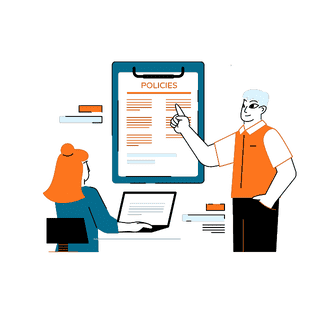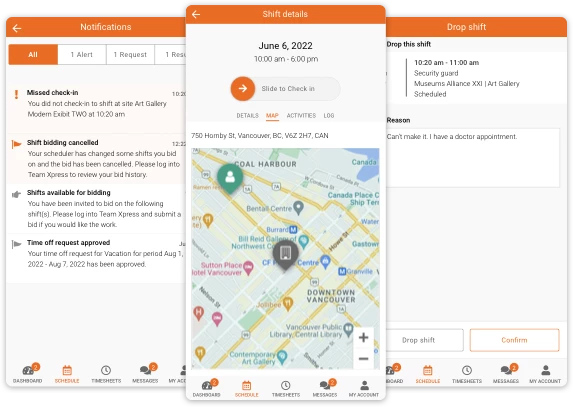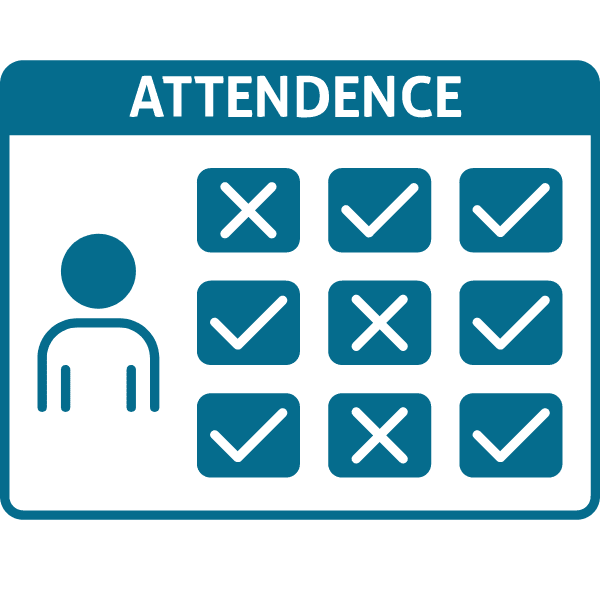Employers often overlook employee attendance issues as a crucial element of workforce management. Consider how many areas of your business are affected when employee attendance is poor, and equally how efficient your business becomes when you have strong, consistent attendance! Lots of employers fail to make this connection and choose not to invest time and effort into managing employee attendance.
Other than maintaining the operating activities of an organization, an engaged and present workforce improves:

- Profitability – when employee attendance is high, output is steady, allowing profitability to continue to grow. Not only that, but operating costs are lower as overtime/contractors are not required to fill the gaps of those that are absent. High attendance also creates a highly efficent, well co-ordinated team, streamlining processes.
- Customer/Client satisfaction – with strong employee attendance, emoloyees can meet and exceed customer and client needs. Regularly present employees are often great at anticipating issues before they happen, decreasing the liklihood of a negative experience for customers/clients.
When it comes to managing employee attendance, there are two considerations. Employers should evaluate how they are tracking employee attendance, and then take action to improve it.
Why is it Important to Track Employee Attendance?
Tracking employee attendance is important for several reasons. Firstly, it helps ensure that employees are fulfilling their work responsibilities and adhering to their schedules, promoting productivity and accountability within the organization.
Secondly, good attendance records are essential for calculating payroll and managing employee benefits, ensuring fair compensation and compliance with labor laws. Errors in payroll can lead to employee turnover which is costly to any organization. In fact, over 50% of workers leave their jobs after just 2 payroll errors! Additionally, attendance tracking can also help identify patterns of unscheduled absences or tardiness, allowing employers to address potential issues of poor attendance early, and improve workforce management.
How to Track Employee Attendance
The main reason we track employee attendance is to monitor employee absenteeism in your workplace. It is imperative to track employee attendance accurately to be able to recognize any signs of absenteeism. Here are some of the main ways an employer can implement a workforce management system that can help with tracking attendance.
Manual timesheets
Traditionally, every company starts out managing employees with the help of manual timesheets. Employees sign in and out of shifts on their timesheet themselves. Manual timesheets help employers see employees’ productivity and set up the payroll to calculate the time employees work. While convenient for some organizations, manual timesheets lack accuracy and leave the employer at risk of falling victim to timesheet fraud.
Acts such as time theft and buddy punching are extremely costly, can create significant productivity issues and induce a hostile atmosphere in the workforce. Buddy Punching actually costs businesses $373M every year in North America. Nevertheless, manual timesheets are something any new organization can introduce to track employees that come to the workplace.
Biometric Time Clocks

Biometric time clocks are the perfect system to eradicate problems associated with manual timesheets. Timesheets for every employee create a lot of paperwork that can get lost or misplaced very easily. They are also susceptible to fraud, as we highlighted above.
On the other hand, biometric time clocks are automated, efficient, and less prone to human errors. A biometric time clock is manual like timesheets, where employees are required to clock in and out manually. However, time clocks are more consistent in collecting time for each employee and more foolproof. Biometric time clocks are also static and are only effective for employees that come to the workplace. This becomes an issue when managing a mobile workforce.
Automated Time & Attendance Software
Manual timesheets and biometric time clocks suffer from various difficulties in a modern business. These clocking systems are manual, time-consuming and have the potential for exploitation. Time & attendance software, on the other hand, completely automates the process for the organization and is currently the most efficient way to track employee attendance. Time & attendance software can adapt to modern businesses, no matter what you do, or where you do it. Not only does it improve attendance collection processes, but time & attendance software can also be implemented for organizations that have mobile/remote workers.
Unlike the other management systems, this software allows employees to clock in from their phone! This is especially important if employees are working in the field. Employees don’t have to go to HQ to check in for their shift, but managers know they got to work on time. It also generally comes with a whole host of features that can further reduce the likelihood of time fraud.
Features of Automated Attendance Collection:
Geofencing

Geofencing is a virtual perimeter for a geographical area, integrated within a time & scheduling software used for checking-in at a particular site. As a result, this feature is used explicitly for employees who require a location/site for their shift. This feature allows employers to monitor employees’ location in real-time based on their GPS location while signing in. This is crucial, mainly when there are various sites, and it’s difficult for employers to move from site to site to see if the assigned employee for a shift is present. Some of the advantages of geofencing for workforce management includes:
- Improved time & attendance tracking
- Less time managing employees
- Improved safety and accountability
Mobile App
The mobile app is what connects the employees with the time & attendance software. Not only is the mobile app used for communicating between employers and employees, but the mobile app can also serve the same function as the biometric time clocks. With geofencing integrated within the mobile app, employees must check-in and out through their phones and enable their location service. This gives disclosure to their employers that they have arrived for their shift. With approximately 95% accuracy, employers will clock their employees based on the employee’s time on site. Of course, there is a limitation about accountability, but employers expect employees to be when working. The Mobile App also contains various other features that strengthen employee attendance, such as:

- Shift Confirmation
- Instant Messaging
- Flexible self-scheduling
- Shift-bidding
- Shift-swapping
- Pre-shift health checks,
- Automated safety checks
Integrations for billing and payroll
The best part about automated time & attendance software is that everything can be integrated. Not only does the software track time & attendance for the organization, but it can send data to your billing and payroll providers to make everything much easier for managers. This benefits employees too! They can look at their timesheets at any time and identify how much they’ve worked and at what rates. Since the amount of human data-entry is reduced, so too is the opportunity for errors to occur.
How to Improve Employee Attendance
To establish the perfect time and attendance tracking processes, we’ve identified quite a few checklists that would allow employers to have precise employee attendance data. Now that we have found a way to track the problem, we look into the solutions to fix the problem. Let’s look into how employers can improve employee attendance.
Set clear expectations with your employees
Setting clear expectations with your employees is essential. Firms usually do this during the hiring process, or in the employee handbook. The first step to effective workforce management is drafting and listing rules and expectations for your employees in an attendance policy. It could be incorporated in the contract, or it could just be verbal, but the employee must know your expectations. Some of the expectations that should be outlined explicitly include excused and unexcused absences, requesting time off, and the methodology for attendance procedures.
Of course, this means there must be consistent communication between the employer and employees to achieve a complete understanding of the policy. Lastly, make sure to have two-way feedback sessions. They’re not mandatory for a company, but this allows employees to have a say on their needs and hence not feel overwhelmed by work. Statistically, work overload can often result in absences, so tackling work overload is essential to reduce absenteeism.
Identify the reasons for absenteeism in the workplace and address them.

Identifying absenteeism itself can be difficult, especially when working with hundreds of employees. This is why tracking employee attendance is so important. However, once you identify absenteeism, either through changes in productivity or work atmosphere, you’ll find a pattern in the reasons for absenteeism taking place. This makes it crucial that employers identify any stressors that are causing strains for their employees. It could be work or non-work-related, but as long as there is any change in productivity, employers should be more active in identifying absenteeism and addressing it. Some of the work-related reasons for absenteeism include:
- Workplace bullying
- Employee Disengagement
- Burnout/Job Stress
It could also be non-work related, such as:
- Family difficulties
- Mental or Physical health
It’s often likely that a job has some influence over non-work-related stressors. As a result, employers are required to address and resolve any such issues that take place. How so?
- Establish a healthy relationship with the employee
- Provide programs and seminars that allow employees to share their problems.
- Try to add some fun elements to work.
It’s not necessary to host various programs, but it’s essential to give employees the option, especially when the work seems overwhelming.
Incorporate flexible scheduling in the workplace
With communication possible through various software and online platforms, there is no distinct advantage of not incorporating flexible scheduling in the workplace. Flexible scheduling brings to the table an opportunity for the employees to work in their most productive way. In any given setting, employees can work under a flexible working policy, where employer and employee come together to decide how the job can be performed most productively. It doesn’t necessarily mean that employees work remotely always, but it means that employees get more freedom from being micromanaged by their employer. It can come in the form of self-scheduling, shift-bidding, or flexible start/finish times. Consequently, the flexible working policy is designed for the benefit of both employees and employers.

Naturally, managers, schedulers, and employees are required to be trained about attendance when incorporating flexible scheduling. Depending on how the policy is constructed, employees must communicate with their managers their attendance, and schedulers need to communicate clear expectations regarding attendance policy. If employees manage their attendance, there has to be an assurance that the employees are sticking to the attendance policy set by the company.
Create a Positive Work Environment
Along the same lines as the points above, it is clear that their morale increases by giving employees more freedom and resources. Employees work at their best when they see work as desirable and not necessary to pay off their rent. A positive work environment is not very difficult to develop, but it requires the workforce to communicate openly and be less stressed. Team building exercises in the form of activities is always an excellent way for the workforce not to feel burdened by the job and also be able to get closer with other employees. Ideas for activities and exercises are endless, but the goal is to keep employees constantly engaged.
Workforce management is a set of processes that companies run, and employee attendance is central in ensuring company productivity optimization. Managing employees itself is a lot to ask when there’s a company to run. However, without the employees, there wouldn’t be any company to run. Subsequently, employee attendance is essential for maintaining operations and keeping a good atmosphere in the workplace. If you are looking for time & attendance software, Celayix has everything we’ve touched on here, and can help you improve attendance tracking ASAP! Reach out to a Solutions Advisor today to see what we can do for you!





